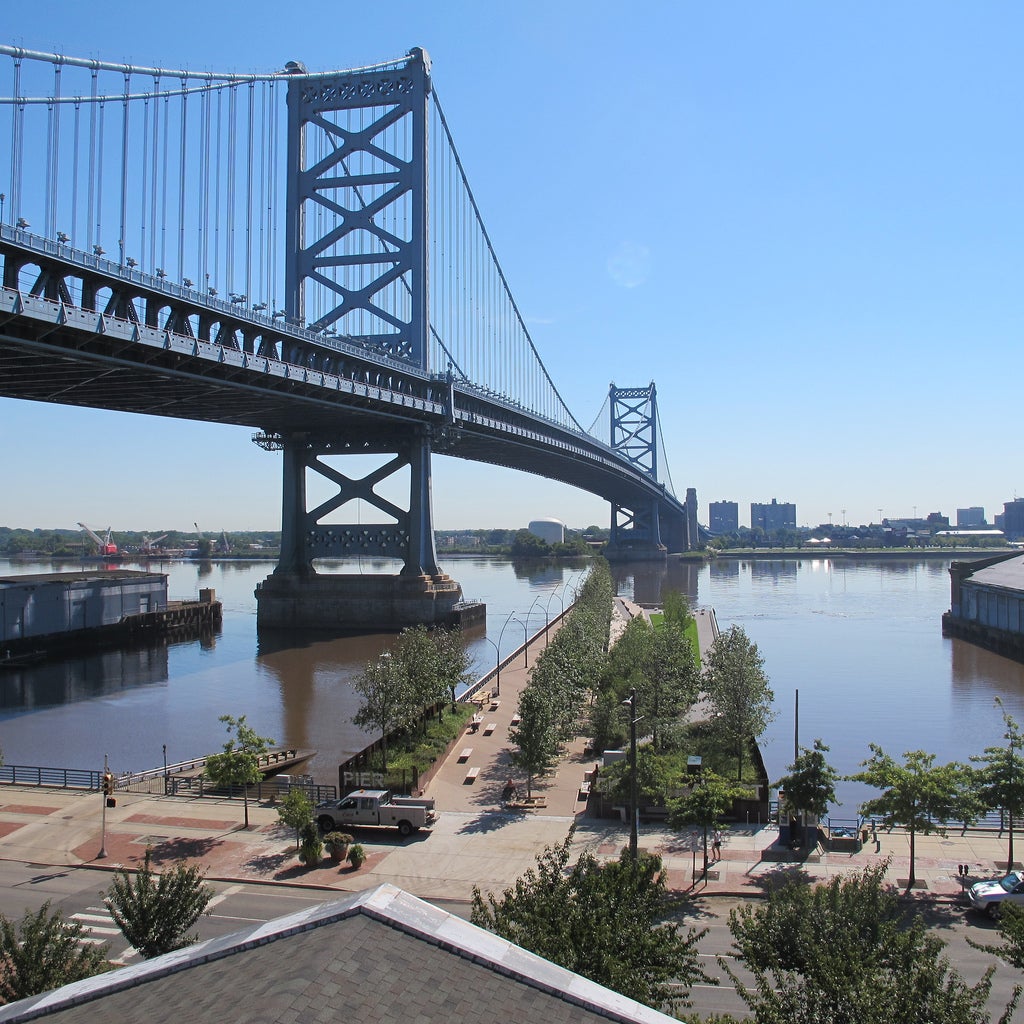Did limited largesse muddle DRPA’s mission control?

At this morning’s meeting, the DRPA Board of Commissioners voted to approve an $18-per-month discount for drivers that cross its bridges at least 18 times in a given month.
While commuters who frequently drive over the Benjamin Franklin, Walt Whitman, Betsy Ross or Commodore Barry Bridges will cheer the potential savings of $216, the decision was met with some derision by some PATCO riders, who won’t receive their own discount.
At the meeting, Larry Davis spoke in opposition, echoing a score of riders on social media who complained about the discount’s disparate treatment of automobile and train commuters. Despite the authority’s “Stewardship. Service. Community.” slogan, Davis argued, DRPA was treating PATCO riders and bridge drivers differently. Worse, the discount served to incentivize driving.
DRPA Vice Chairman Jeffery Nash responded to the comments by listing a number of recent and ongoing upgrades to PATCO service and noting that the bridge tolls help subsidize PATCO operations. PATCO has an operating budget of about $52 million, a capital budget of $53 million, but only pulls in approximately $26 million in revenue. The DRPA’s operations – excluding capital costs – are funded by bridge toll revenue.
If DRPA were a private, for-profit corporation, then Nash’s logic would be flawless. But it’s not. It’s a public transportation authority.
To commuters, Davis responded, the operating subsidies and accounting doesn’t matter: they only see how much fares and tolls cost. Assuming commuters in South Jersey and Philadelphia are rational, self-interested economic actors, then that’s certainly true.
(While this is a common assumption in microeconomics, it’s debatable in this region. Consider: What truly rational, self-interested person would submit themselves to the torture of supporting teams like the Phillies and Sixers? Philadelphia sports fans seem more like irrational, self-loathing masochists, no?)
Similarly true, the distinction between drivers and riders doesn’t really matter for the DRPA’s bottom line: It’s still less revenue, regardless if you reward driving or riding.
To argue that bridge tolls subsidize PATCO operations may be accurate, but it’s also inapposite: the fact such PATCO subsidization exists already doesn’t justify giving frequent drivers a discount, or invalidate expanding such subsidies further. It’s simply a matter of internal accounting.
Providing a discount to regular customers rewards loyalty, which is a sensible move for a corporation if it can monetize that loyalty in the form of new customers. That’s not what DRPA is doing here, though. And building market share isn’t the mission of a transportation agency.
The DRPA’s mission is “moving people and goods across the Delaware River.” Implicit after that is a more fundamental, underlying goal: …to support and improve the regional economy.
Government agencies like the DRPA should consider externalized costs and benefits when they make policy decisions like this bridge toll discount. The mandate of shareholder wealth maximization that justifies for-profit companies ignoring these externalized costs and benefits doesn’t exist here.
For-profit corporations get to focus on what makes them more money, not what makes society better off. That’s why drug companies invest more money on researching new treatments for ED than PTSD, even though curing the latter would be far more valuable to society. (A true Benthamite utilitarian could argue that the wider spread, smaller joys from ED drugs might lead to greater happiness than treating mental illness, but that’s a debate for another day.)
Today, the DRPA ignored the benefits of increased transit ridership that it couldn’t internalize, like the increases to property values near busy PATCO stations and the economic gains from providing mobility to those who can’t drive due to physical or financial constraints. The DRPA also ignored the externalized costs of increased driving, like increased congestion and pollution.
Ignoring externalized costs doesn’t make them go away. Society bears them, here in the form of more traffic, higher asthma rates, and the increased likelihood for automobile accidents, among others. The DRPA is failing to examine this decision from a framework for determining the economically optimal allocation of resources. In other words, it’s wasting money.
That all said, it’s not clear that this particular discount is socially deleterious or that PATCO riders deserve another discount. Estimating the costs and benefits of all these theoretical impacts itself costs money in the form of consultants. And simply returning $6.4 million annually to the region that otherwise would have gone to bondholders will have short-term economic benefits (although, that’s arguably paid for by our kids and grandkids who’ll be saddled with more debt in the future).
And that’s a more fundamental point: while in theory this discount clearly incentivizes more driving, it’s unclear whether an $18-a-month difference will really change anyone’s habits in practice. It might convince some current Tacony-Palmyra Bridge patrons to switch to the Betsy Ross. It’s less likely to convince train riders to give up a morning of crosswords and Sudoku for crossroads and stop-and-go traffic.
The DRPA discount will be popular, make no mistake. The DRPA management should give itself a pat on the back for returning the agency to such fiscal strength that reducing user fees is feasible. And this has historical precedent on its side: it’s a restoration of a discount discontinued in 2011. But it seems to lack truly sound policy arguments in its favor, and the past should offer cold comfort here.
As Justice Oliver Wendell Holmes once said: “It is revolting to have no better reason for a rule of law than that so it was laid down in the time of Henry IV. It is still more revolting if the grounds upon which it was laid down have vanished long since, and the rule simply persists from blind imitation of the past.”
WHYY is your source for fact-based, in-depth journalism and information. As a nonprofit organization, we rely on financial support from readers like you. Please give today.




